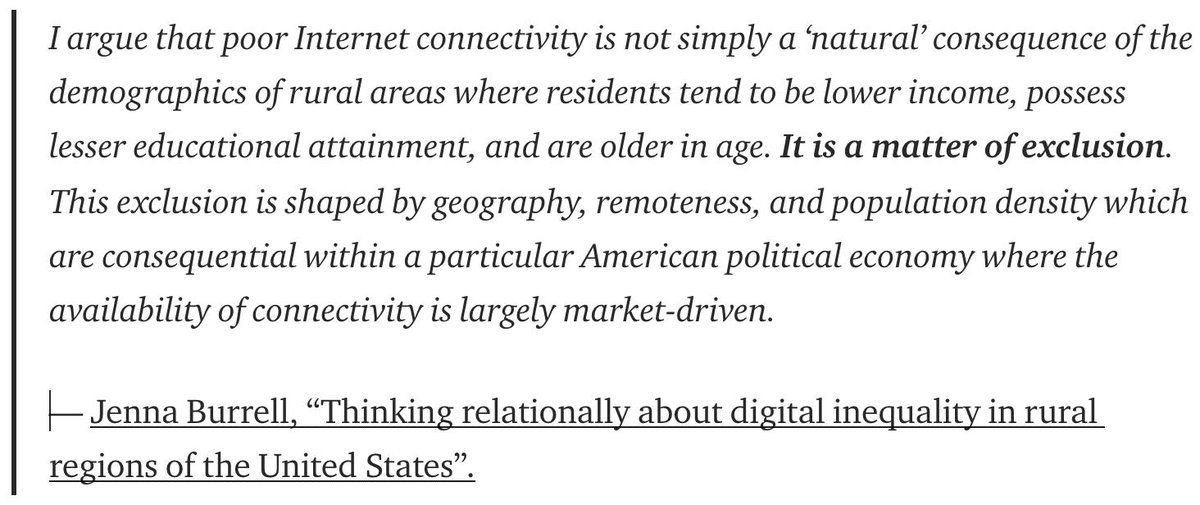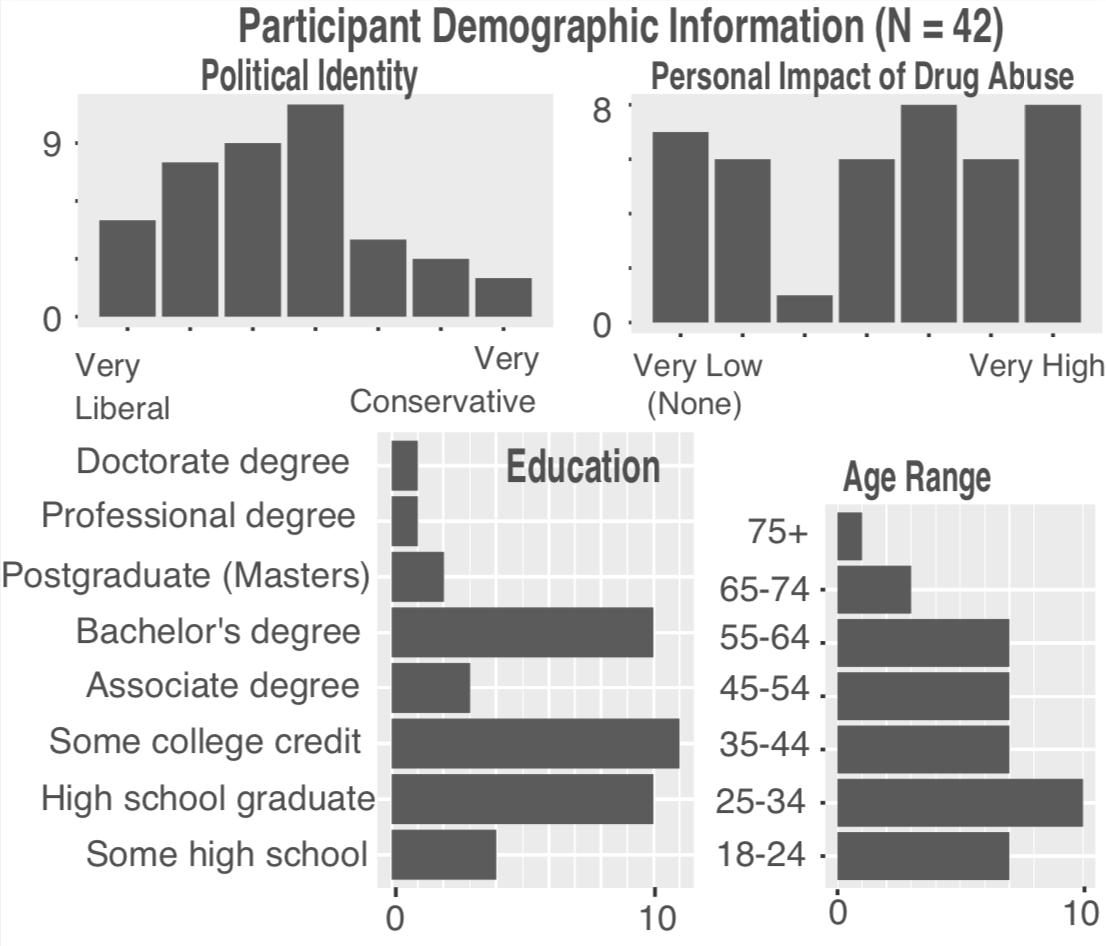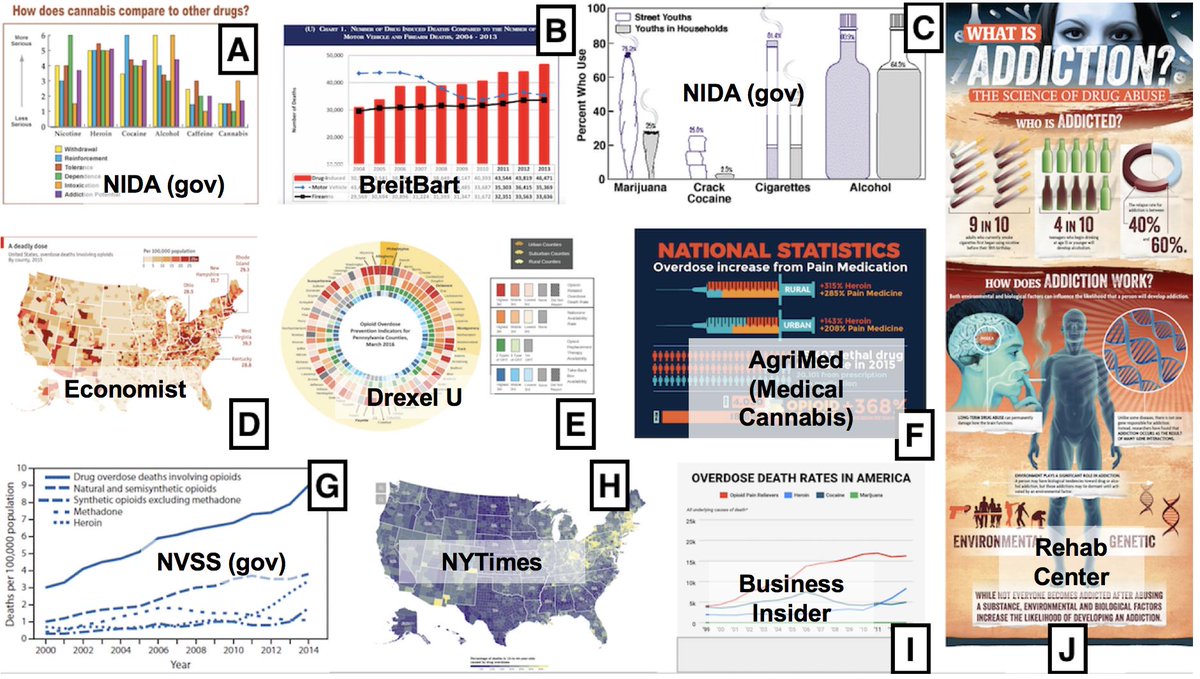Blog post soon, but until then:
- paper: arxiv.org/abs/1901.01920
- data: osf.io/uxwts/

- Interpreting data is *critical* in 2019
- Vis amplifies our interpretation, but probably not equally for everyone
- We need to do better understanding who does (and doesn't!) currently trust or value vis
- If we don't, we deepen divides
First, I want to share the awesome research by @jennaburrell on connectivity in rural regions because I think it's an important reminder that our access to data is NOT equal and that we should be exploring these inequalities more (firstmonday.org/ojs/index.php/…)

The 42 people we talked to were diverse in their age and educational background, and many had been deeply impacted by drug abuse (in particular, opioids). That will be important in a minute.
Material/data reminder: osf.io/uxwts/
Onto the results!

My thoughts: For many people, these experiences probably went unspoken in interviews. Who knows how these factors drove the decisions of the people who remained silent...
But for such a powerful driver of attention, how can we serve it better through design?
We think we might be seeing an anchoring effect as well - some participants suggested they might not change their rankings *no matter what new information was presented*.
For example, one person explicitly told us "[I] don't often change my mind".
There are a lot of stories here (read the paper!). Many need replication and more highly-controlled investigations.
But at the very least, I think we have to explore who *doesn't* pay attention to or trust vis (not just who doesn't understand it)
Paper: arxiv.org/abs/1901.01920
Data: osf.io/uxwts/



















